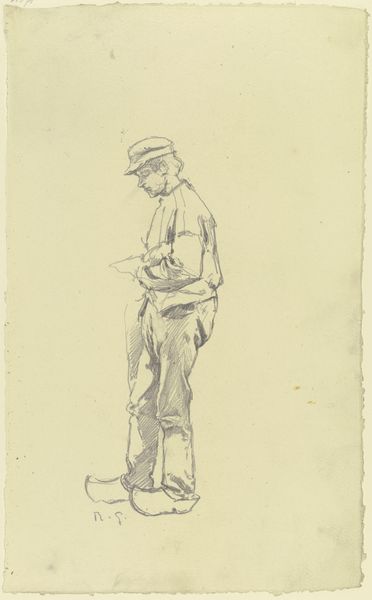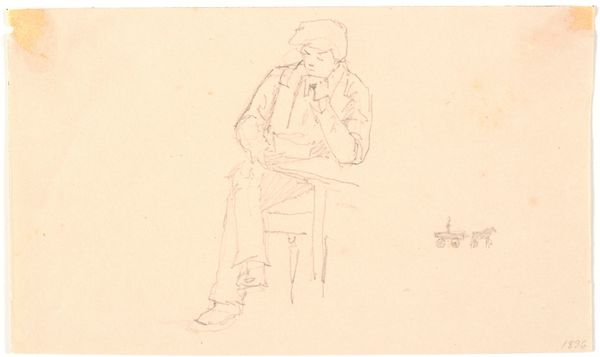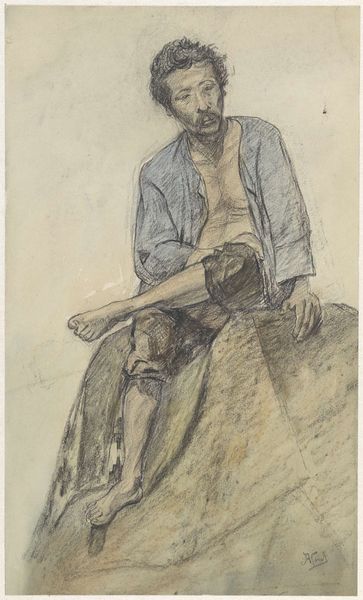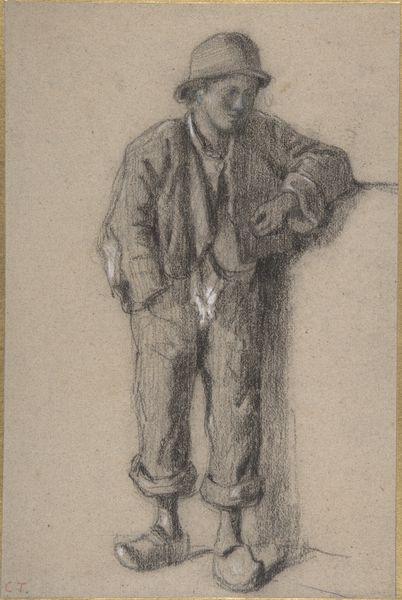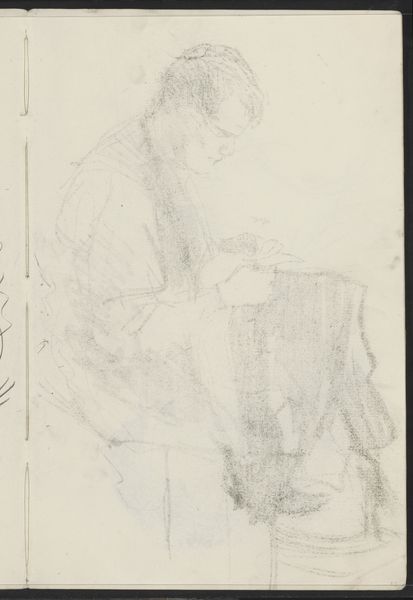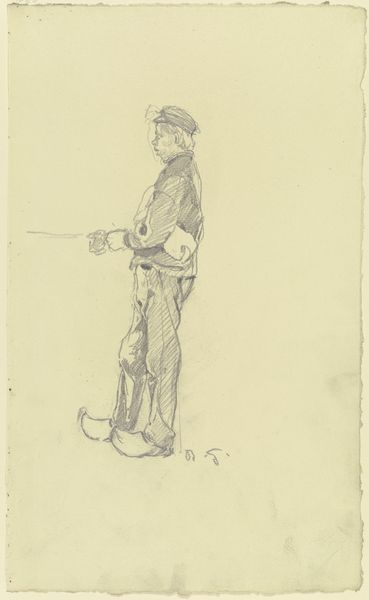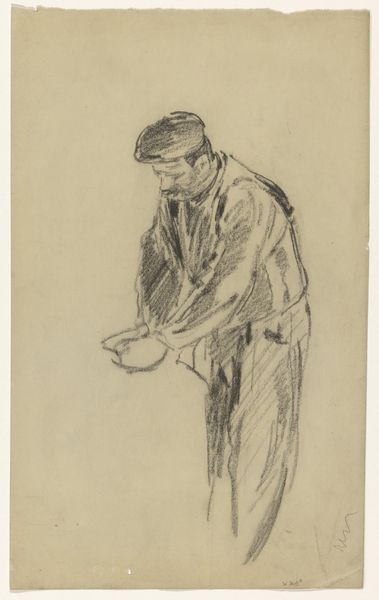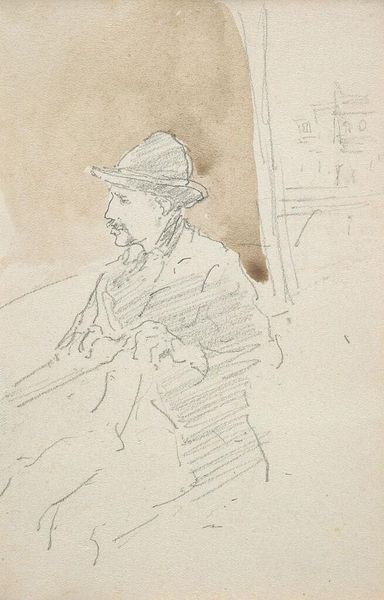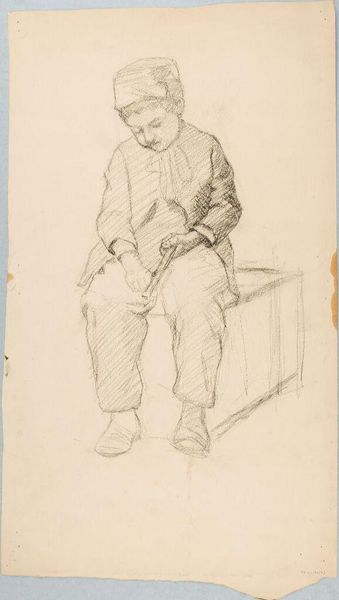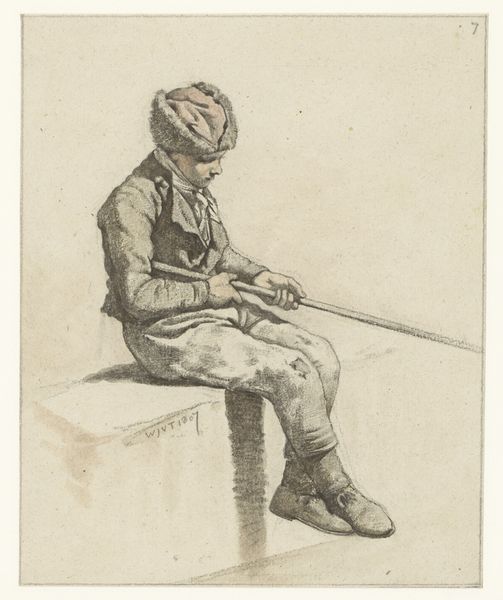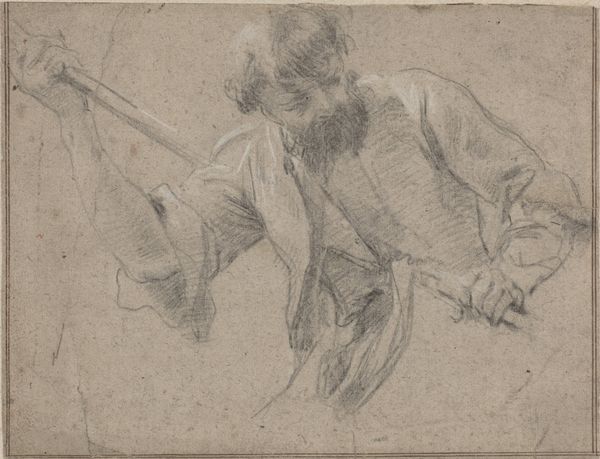
drawing, watercolor
portrait
drawing
watercolor
genre-painting
watercolor
realism
Dimensions: 95 mm (height) x 152 mm (width) (bladmaal)
Curator: This is Hans Smidth's "Fisherman Carrying a Tray," likely created sometime between 1889 and 1917. It's a watercolor drawing offering a glimpse into everyday life. Editor: Immediately, the subdued palette evokes a sense of melancholy. The hunched figure and downcast gaze certainly contribute to that mood. I find it somber, yet dignified. Curator: It is quite restrained. Smidth, known for his Realist depictions of rural life, really captures the labor and the life of Danish fishermen in this period. This piece speaks to the growing public interest in documenting different working classes at the turn of the century. These works brought these figures into museums, lending a dignity that wasn’t always there in societal views of them. Editor: The tray, of course, draws my eye. We can't quite make out what he carries, but its weight seems significant, both physically and symbolically. Is it the "catch" of the day, perhaps? In some cultural traditions, fish symbolize prosperity or a connection to deeper currents. Curator: Interesting point about symbolism. What fascinates me is the role the fishing industry played in Denmark's economic and social landscape. Genre paintings such as these reflect the changing dynamic between urban and rural, and how society begins to conceptualize these figures outside of daily routines. He’s being memorialized by Smidth. Editor: I agree, the pose conveys both resilience and resignation. He's weathered, clearly, bearing the burdens, whatever they are. It could also serve as a metaphor for the weight of tradition. What sort of traditions, customs, or even hardships do you see suggested here? Curator: Considering Denmark's strong maritime history, it suggests themes like national identity and economic sustenance. The fisherman could embody not just his individual struggle, but also the collective identity of a people tied to the sea and it's how he’s represented to a larger populace. It underscores a kind of shared cultural heritage and, maybe, also some degree of exploitation. Editor: Looking at this, I now sense a powerful blend of individual weariness and collective cultural significance, carried through generations and manifested in one man’s pose. Curator: Yes, Smidth uses an economic activity, a cultural artifact of sorts, to point to the man, the industry, and an emerging sense of cultural awareness.
Comments
No comments
Be the first to comment and join the conversation on the ultimate creative platform.
